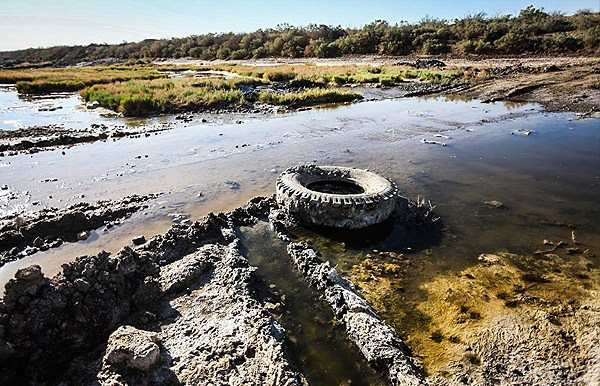Isfahan is hosting the 2016 World Wetlands Day on Tuesday in the city of Varzaneh, to the east of provincial capital and in the vicinity of Gavkhouni Wetland.
World Wetlands Day is celebrated internationally every year on February 2. It marks the anniversary of the signing of the Convention on Wetlands of International Importance (Ramsar Convention) in Ramsar, Iran, on Feb. 2, 1971. Since 1997, the Ramsar Secretariat provides outreach materials to help raise public awareness about the importance and value of wetlands.
The theme for World Wetlands Day 2016 is ‘Wetlands for our Future: Sustainable Livelihoods’ which is selected to demonstrate the vital role of wetlands for the future of humanity and specifically their relevance towards achieving the United Nations Sustainable Development Goals.
The commemoration will be attended by the secretary-general of Ramsar Convention, Christopher Briggs, and members of the secretariat. Iran’s Department of Environment has invited ministers and ambassadors from countries with valuable experience and expertise on wetland conservation, hoping that their feedback will help contribute to the restoration of Iran’s wetlands, Mehr News Agency reported.
DOE officials will be hoping to discuss the restoration of the key Gavkhouni Wetland, which is at risk of complete desiccation as a result of its main tributary, Zayandehroud River, running dry.
“If the lagoon completely dries out, it will turn into a source of dust storms which, since it’s location in the center of the country, will likely affect most provinces,” said Hamid Zahrabi, head of the provincial office of the DOE.
Located in central Iran, Gavkhouni is the terminal basin of Zayandehroud. It is one of Iran’s 22 Ramsar-registered wetlands and hosts countless migratory birds during winter.
Unrestrained urbanization and outdated farming practices, which include siphoning the wetland’s water, have taken a toll on the once-pristine lagoon.
Not Alone
Gavkhouni is not the only Iranian wetland that’s grappling with desiccation; Hoor al-Azim in Khuzestan Province and the Hamouns in Sistan-Baluchestan Province have turned into primary sources of dust storms in their respective regions, causing significant drops in air quality and packing hospitals with young and old suffering from breathing difficulties.
In the northern province of Gilan, Anzali Wetland has been besieged by two invasive plant species, water hyacinth and water ferns. Furthermore, sedimentation and the dumping of household waste have reduced the lagoon’s depth from nine meters 40 years ago to one meter today, making the wetland a flood risk.
Livelihoods from fishing, rice farming, travel, tourism, and water provision all depend on wetlands. And wetlands are vital to humans in many other ways. They host a large variety of life, protect the coastlines, provide natural sponges against river flooding, and store carbon dioxide to regulate climate change.
It is regrettable that wetlands are often viewed as wasteland, and more than 64% of the planet’s wetlands have disappeared since 1900.


